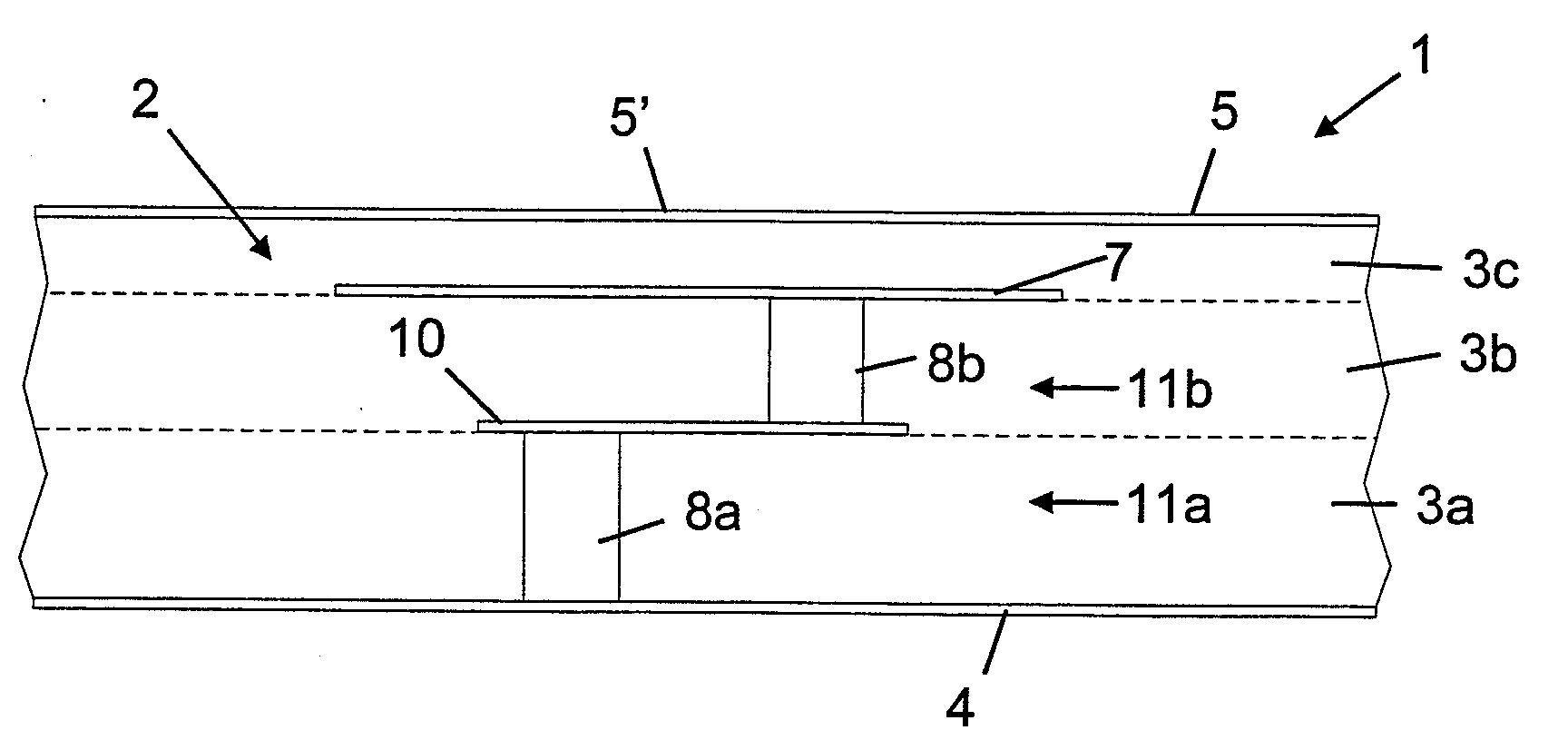Laminated RF device with vertical resonators
a resonator device and vertical rf technology, applied in the direction of resonators, electrical equipment, antennas, etc., can solve the problems of increased interference possibility between different systems, communication systems that require an extremely high frequency selectivity, and the decrease of the resonator device, so as to facilitate the provision of selective cross-coupling and facilitate the manufacturing process
- Summary
- Abstract
- Description
- Claims
- Application Information
AI Technical Summary
Benefits of technology
Problems solved by technology
Method used
Image
Examples
Embodiment Construction
[0133]In the following, exemplary preferred embodiments of the invention are described in more detail with reference to the drawings. Throughout the figures, similar and corresponding parts are designated by the same reference numerals.
[0134]In FIG. 1a a resonator device 1 having only one resonator 2 is shown in schematic cross sectional side view. The same resonator device 1 is shown in schematic top view in FIG. 1b and in cross sectional end view in FIG. 1c. The resonator device 1 comprises a laminate 3 that includes a plurality of sheets 3a, 3b made of dielectric material and stacked on top of each other and laminated together. This laminate 3, in which the sheets 3a, 3b constitute layers of the laminate, can be regarded as the main body of the resonator device or a substrate into which main body or substrate components of the resonator 2 to be described in the following are incorporated or embedded. It is to be understood that the sheet 3a and / or the sheet 3b may be replaced by ...
PUM
| Property | Measurement | Unit |
|---|---|---|
| frequency band | aaaaa | aaaaa |
| thickness | aaaaa | aaaaa |
| width | aaaaa | aaaaa |
Abstract
Description
Claims
Application Information
 Login to View More
Login to View More - R&D
- Intellectual Property
- Life Sciences
- Materials
- Tech Scout
- Unparalleled Data Quality
- Higher Quality Content
- 60% Fewer Hallucinations
Browse by: Latest US Patents, China's latest patents, Technical Efficacy Thesaurus, Application Domain, Technology Topic, Popular Technical Reports.
© 2025 PatSnap. All rights reserved.Legal|Privacy policy|Modern Slavery Act Transparency Statement|Sitemap|About US| Contact US: help@patsnap.com



